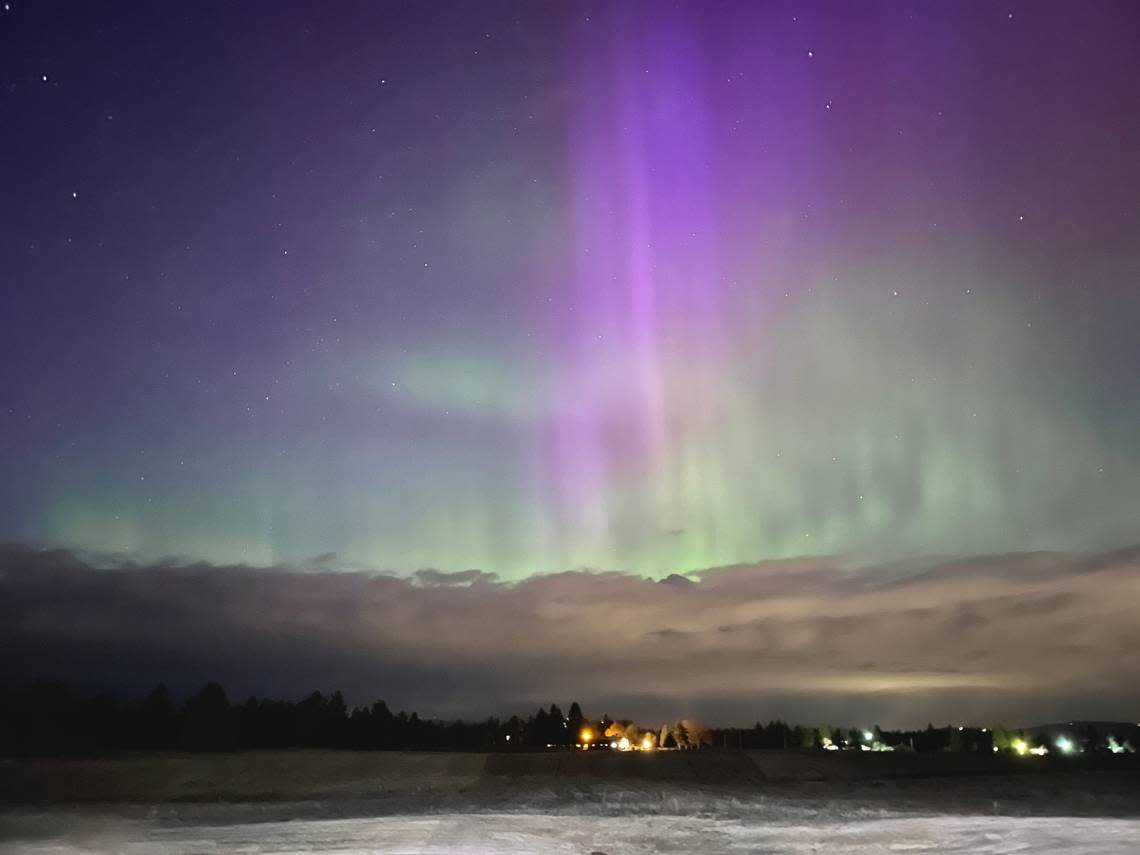Much of Washington could see aurora Friday night as NOAA predicts severe geomagnetic storm

- Oops!Something went wrong.Please try again later.
Rare solar activity means Washington and most of the northern U.S. could see an aurora late Friday night and early Saturday morning, according to the National Oceanic and Atmospheric Administration.
“We have a very rare event on our hands,” Shawn Dahl, service coordinator at the NOAA’s Space Weather Prediction Center, said on a call with the media Friday morning. “Last time that we issued a G4 watch, which is a geomagnetic storm watch for severe levels — that four level on our one to five scale — was 2005.”
Solar storm headed for Earth just got upgraded to most severe category
Starting Wednesday, a series of coronal mass ejections shot large amounts of material from the outermost layer of the sun’s atmosphere, carrying magnetic fields. The flares are expected to reach the Earth, causing a geomagnetic storm. If the storm reaches Earth at the right time, an aurora would be visible from parts of the planet.
“We have high confidence that a series of coronal mass ejections, which are blasts of energetic particles and magnetic fields that depart the sun, are directed right towards earth,” Dahl said.
Where in Washington can you see the aurora?
NOAA released an experimental map predicting the aurora’s viewline. According to the prediction, the far north of Washington has a high likelihood of an aurora while the bulk of the state has a more moderate likelihood.
However, according to Dahl, auroras are difficult to predict with certainty.
“There’s a lot of nuances to that,” he said.
ICYMI, @NWSSWPC has issued the first G4 (Severe) geomagnetic watch since 2005. The aurora tomorrow may become visible over much of the northern half of the country, and maybe as far south as Alabama to northern California.https://t.co/SFKgB9x678 https://t.co/1H2sDQrIAj pic.twitter.com/1Mzzswniyl
— National Weather Service (@NWS) May 10, 2024
In the right circumstances, Dahl said a G4 could result in auroras seen as far south as northern California.
“Let’s say we do get to G4 levels, and a decent G4 at the right time – in the late evening to post-midnight hours – then the aurora could perhaps be seen as far south as Alabama and Northern California,” Dahl said.
Cloud coverage could interfere isn’t likely to interfere with aurora viewing in western Washington, according to the National Weather Service in Seattle.
When will the storm hit?
Dahl said he expects the storm to reach Earth “as early as this evening, eastern daylight time, and then later in the evening perhaps,” before adding that “there’s less certainty with the timing.”
The storm is expected to reach the monitoring satellite a million miles away, around 8:00 p.m. EST. Once it’s picked up by the satellite, NOAA will have a better idea of when the storm will reach Earth.
What else can the storm affect?
The storm could disrupt satellites, radio signals and the power grid. However, Dahl said that NOAA is taking steps to mitigate any of those effects.
“As far as the worst situation expected here on Earth, that’s tough to say and I wouldn’t want to speculate on that,” Dahl said. “However, severe levels is pretty extraordinary, it’s a very rare event to happen. And when we notify the critical infrastructure operators to include the power grid, they’re able to adequately prepare.”

